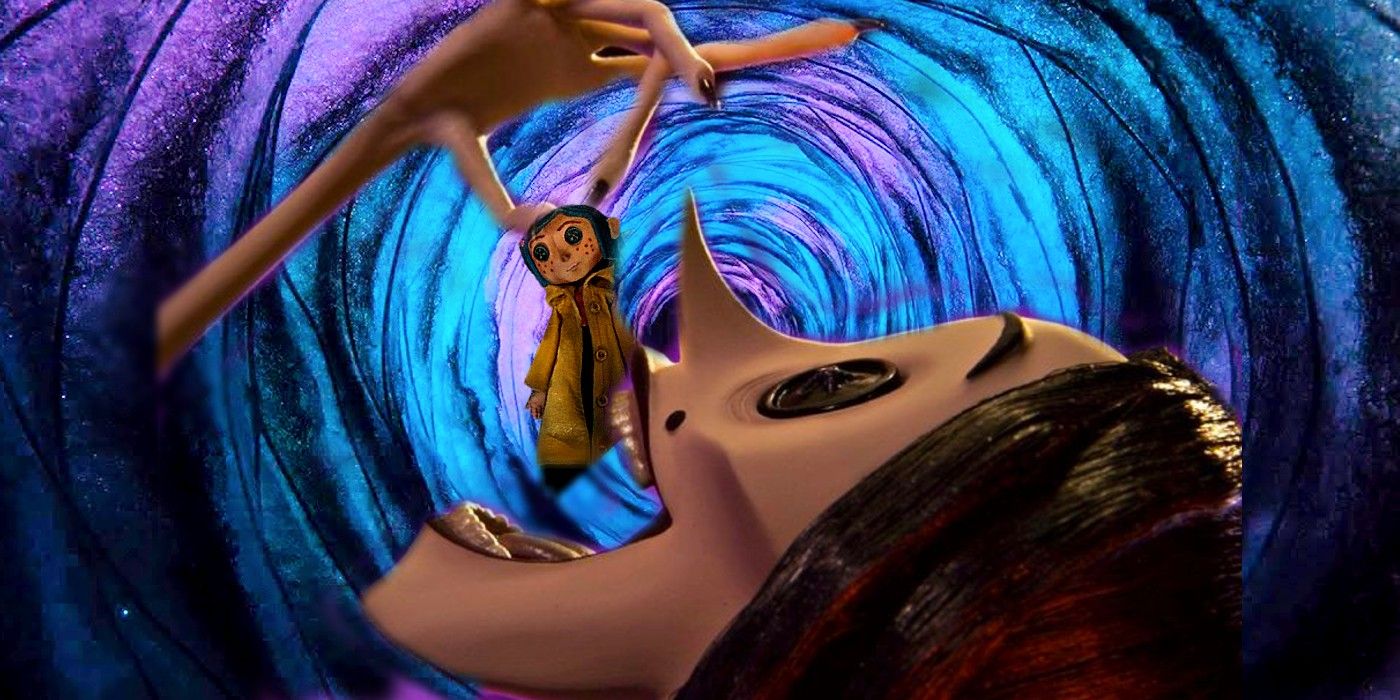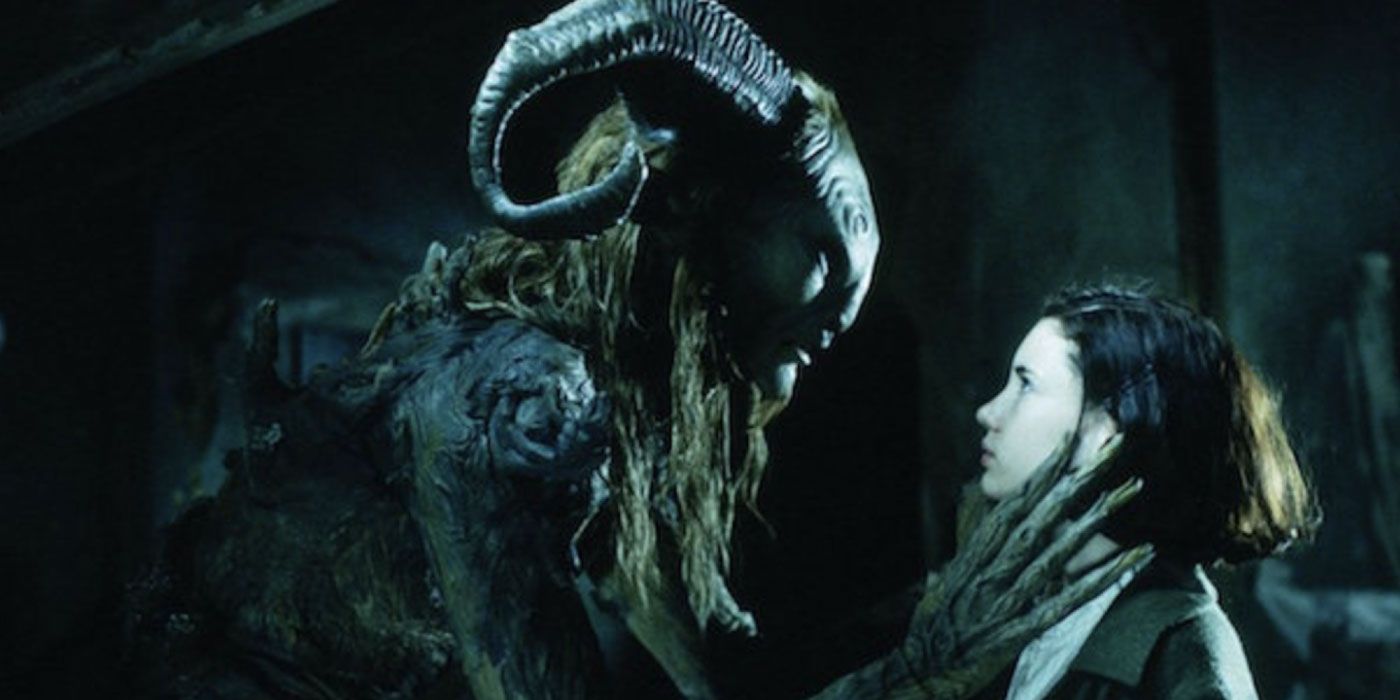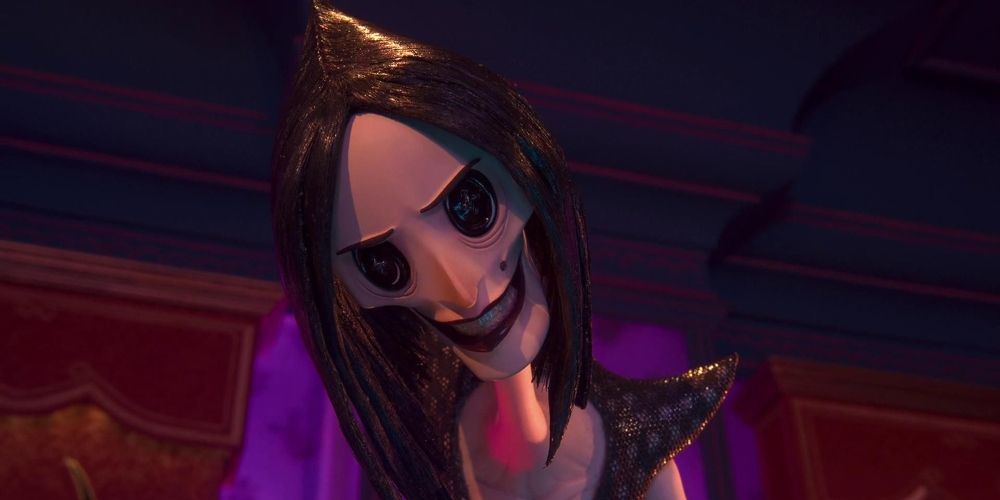Summary
- Coraline's potential as a supernatural horror movie is hindered by its PG rating, preventing it from fully exploring its dark themes and creating a more intense and terrifying experience.
- The comparison between Coraline and Guillermo Del Toro's Pan's Labyrinth highlights how a more adult-rated film can provide greater nuance, ambiguity, and complexity, resulting in a more enjoyable and unpredictable plot.
- The lighter moments in Coraline feel out of place due to the movie's darker tone and complexity, creating an unsatisfying ending that could have been more unsettling and satisfying if the film had a rating that allowed it to be darker throughout.
Coraline has traumatized young children since its release in 2009, but the animated children's horror film gained a cult following that year. Even 14 years after its initial release, Coraline continues to inspire countless discussions, comparisons, and theories connecting it to horror icons like Stephen King's It, and is arguably the best children's horror movie ever made. While people of all ages can enjoy the creepy horror that is Neil Gaiman's Coraline, the fact that it's a children's movie with a PG rating actually hinders Coraline from reaching its full potential as a supernatural horror movie. With a more adult rating, Coraline could've been the best animated horror film of all time. Some argue that Coraline already pushes well past its PG rating and intended audience due to its explicit exploration of dark themes like sacrifice, torture, and murder, so changing the rating could've given the movie the space it needed to fully come into its potential.
With deeply unsettling themes, plot points, and horrifically twisty animation, Coraline is already beloved by older children and adults alike. Still, the movie often seems afraid to take that extra step when dealing with its darker moments. Coraline is so detailed, every second of the film unveiling another easter egg in a song or a simple object on screen, that older fans continue to debate the movie's contents and its meaning. The film represents a split between reality and fantasy, but that split could be as imagined as Coraline as it is actually happening. The many darker theories that spiral from Coraline's lighter moments show that fans ache for that even darker twist to Coraline that would've made it even more incredible, but being a children's film left certain avenues closed. At the same time, a more substantial rating could have let the film explore more.
Coraline Would've Benefited From More Nuance and Ambiguity
Guillermo Del Toro's Pan's Labyrinth is arguably both Del Toro's best work and one of the most beautiful works of supernatural horror in film. Much like Coraline, it centers on a child protagonist exploring a split in reality that allows her to travel between her world and a more magical realm. In many ways, the core aspects of Pan's Labyrinth and Coraline are very similar. In both cases, the child's reality feels darker to them at first than the magical realm, and they strive to stay in the magical realm. Pan's Labyrinth, however, is an adult-rated film, and this is shown as it diverts from the usual children's storyline Coraline follows. Coraline's darker reality is one in which her parents tend to ignore her. Ofelia's darker reality is due to her sadistic father, a military captain in Nazi-occupied Spain during WWII. So, even the darker aspect of Pan's magical realm is a haven for Ofelia, whereas Coraline soon realizes she wants to escape the Other Mother and cannot.
The nuance and ambiguity of Pan's Labyrinth also play into interpreting its ending. Where Coraline represents its ending as happy, the ending of Pan's Labyrinth is both tragic and happy as Ofelia is killed by her father but makes it to Pan's realm as a princess because of her death. Here, the ambiguity and nuance of whether Pan's realm is actually real determines the endings. While Ofelia's death is tragic in any case, audiences are left to wonder if she actually becomes a princess in a magical realm or if it's simply the imagination of a dying child trying to accept her fate. Like many children's stories, Coraline paints the magical realm as all bad, giving her no choice but to prefer the real world despite her circumstances with her parents never changing. Here, the greyness of good and bad and the visceral horrors of the real world in Pan's Labyrinth provide a less predictable, more enjoyable plot.
Persistent Fan Theories Have Given Coraline's Happy Ending a Darker Twist
Since Coraline's release, the internet has been abuzz with fans picking apart every aspect of the film, looking for every easter egg and twist Gaiman provides throughout the film. The ending of Coraline basically delivers the picturesque happy ending that's so common in children's films. This makes sense because Gaiman's Coraline was a children's book before it was a movie. Though Coraline's parents have no recollection of their horrific adventure in the other realm, the film ends with Coraline happy at home with her family, and everyone is safe and sound. Due to the immersive visuals and meticulous detail of the film, however, audiences have often come up with their own theories that give Coraline's lighter ending a much darker twist.
In the film, Coraline travels through small doors to this other magical realm. The tunnels she passes through have a hypnotic, psychedelic quality, twirling and twisting about the screen in odd colors until Coraline passes to one side or the other. She travels to and from realms multiple times throughout the film, but she seems to be the only one capable of doing so out of the people in her regular world. Some fans, however, interpret every journey of Coraline's as her delving deeper into the other realm. Every time she sleeps or passes through a tunnel, she's actually passing through yet another level of the other realm disguised as her regular world, thus falling deeper and deeper into the Other Mother's clutches. This fan theory twists Coraline's happy ending into a dark, inescapable prison, proving that audiences expected more darkness from the creepy film. Giving Coraline the creative space of an older rating could have given it the capacity to explore such things.
The Lighter Moments in Coraline Feel Out of Place Due to the Movie's Otherwise Darker Tone and Complexity
From the very beginning of the film, Coraline sets a grim, bleak, and creepy tone. The colors in the real world are muted; Coraline finds a doll that looks suspiciously like her, her parents pay no attention to her, and she has a strange neighbor who won't leave her alone. All of these aspects in Coraline paint the unsettling place in which the movie takes place. In contrast, the brighter and more energetic other realm is the one that uses those same flashy aspects to distract Coraline from the horrors lurking just beneath. From the Other Mother's creeping manipulation to the discovery of the other children who had their souls stolen when their eyes were taken, Coraline has many horrific aspects that make the film complex, engaging, and dark. Already, the film could be called too dark for its PG rating.
Due to this consistently dark, unsettling, and creepy tone throughout the entire film, all of which comes to a crescendo when Coraline must save her parents from the Other Mother and navigate through a horrifying circus of enemies in the other realm, the lighter scenes feel out of place. Coraline can be deeply disturbing at times, especially for a children's movie, so a happy ending where Coraline's relationship with her parents remains unchanged due to the lack of memory of their peril feels unsatisfying. If the film could go beyond its PG rating, the ending could have been as dark and unsettling as the rest of the movie, giving audiences the satisfaction they crave years later.
Coraline's PG Rating Cuts the Film's Potential At the Knees
With a beautiful animation style, immaculate attention to detail, and a story with room for nuance and complexity, as well as a writer like Neil Gaiman, who is more than capable of writing such a tale, Coraline had the potential to be the best animated horror film of all time. Coraline having a PG rating makes no sense. Many fans and parents of young children insist that the film is too explicitly dark for the young children it's supposedly geared towards, but at the same time, the film often pulls its punches in order to stay within the bounds allowed. If Coraline had veered away from being a children's film and moved more into the territory of Guillermo Del Toro's Pan's Labyrinth, it could've realized all the darker and more complex moments that were passed over.
While the movie already has a dedicated fan base that continues to be inspired to write fanfiction or debate theories, a different rating could have even improved how the film was received. The popular opinion is that the film is not suitable for young children, so the audience was skewed in Coraline's early days after its release. An older rating for the film would have steered the right audience to the film and allowed it to explore every dark corner with a light shone on it in the children's film. Coraline is still on most horror fanatics' lists regarding animated horror movies. Still, it could've taken the top spot if the film's PG rating and intention to be a children's movie hadn't prevented it from exploring even darker aspects of its story.





